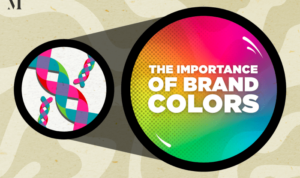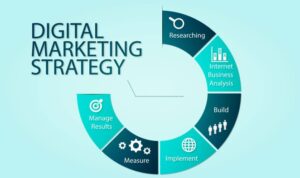Digital Advertising Basics introduces you to the world of online marketing, covering everything from strategies to targeting, with a cool high school vibe that will keep you hooked.
From understanding the difference between traditional and digital methods to exploring the power of data analytics, this guide has got you covered.
What is Digital Advertising?: Digital Advertising Basics
Digital advertising is a form of marketing that utilizes online platforms to promote products or services to a targeted audience. In the modern marketing landscape, digital advertising plays a crucial role in reaching consumers where they spend a significant amount of their time – on the internet. Unlike traditional advertising methods, digital advertising allows for more precise targeting, real-time analytics, and the ability to adjust campaigns on the fly based on performance data.
Difference Between Traditional and Digital Advertising
Traditional advertising involves channels such as TV commercials, print ads, and billboards, which have a broad reach but lack the ability to target specific demographics effectively. On the other hand, digital advertising leverages platforms like Google Ads, Facebook Ads, Instagram Ads, and LinkedIn Ads to reach a highly segmented audience based on demographics, interests, and online behavior. This targeted approach results in higher engagement and conversion rates compared to traditional methods.
Popular Digital Advertising Platforms
- Google Ads: Google’s advertising platform allows businesses to display ads on Google search results, websites, YouTube, and more.
- Facebook Ads: With over 2.8 billion active users, Facebook Ads enables businesses to target users based on their interests, demographics, and behavior on the platform.
- Instagram Ads: As a part of Facebook’s ad platform, Instagram Ads help businesses reach the platform’s visually-focused user base through photo and video ads.
- LinkedIn Ads: LinkedIn’s advertising solutions cater to a professional audience, allowing businesses to target users based on their job title, industry, and company size.
Types of Digital Advertising
Digital advertising encompasses various forms of online marketing strategies that aim to reach and engage target audiences. Each type of digital advertising offers unique features and benefits that cater to different industries and consumer behavior. Let’s explore some of the most common types of digital advertising:
Display Ads
Display ads are visual advertisements that appear on websites, apps, or social media platforms. They can be in the form of banners, images, or videos and are designed to attract attention and drive traffic to a specific website or landing page.
Video Ads
Video ads are promotional videos that are played before, during, or after online content such as videos, live streams, or social media. They are effective in capturing audience attention and delivering engaging messages in a visually appealing format.
Social Media Ads
Social media ads are paid advertisements that appear on social networking platforms like Facebook, Instagram, Twitter, and LinkedIn. They are highly targeted based on user demographics, interests, and behaviors, making them effective for reaching specific audiences.
Search Engine Marketing (SEM)
SEM includes paid search ads that appear on search engine results pages (SERPs) like Google, Bing, or Yahoo. These ads target users based on their search queries, making them relevant and timely for users actively seeking specific products or services.
Native Advertising
Native advertising blends in with the content of the platform where it is displayed, making it less intrusive and more engaging for users. These ads match the form and function of the site or app, creating a seamless user experience.
Mobile Advertising
Mobile advertising refers to ads specifically designed and optimized for mobile devices like smartphones and tablets. With the increasing use of mobile devices, mobile advertising plays a crucial role in reaching consumers on-the-go and driving conversions.
Comparing Effectiveness
Different types of digital advertising have varying levels of effectiveness depending on the industry, target audience, and campaign objectives. For example, display ads may be more suitable for brand awareness, while search engine marketing can drive immediate conversions for e-commerce businesses. It’s essential for marketers to choose the right mix of digital advertising strategies based on their goals and target market.
Mobile Advertising in Digital Marketing Mix
Mobile advertising has become a cornerstone of the digital marketing mix due to the widespread use of smartphones and mobile apps. Marketers can leverage mobile advertising to target consumers based on their location, behavior, and preferences, creating personalized and relevant experiences. Mobile ads can also drive foot traffic to physical stores, increase app downloads, and boost overall brand awareness.
Digital Advertising Strategies

In the world of digital advertising, having effective strategies is crucial for reaching your target audience and achieving your marketing goals. Let’s dive into some common strategies used in digital advertising campaigns to maximize your success.
PPC Advertising
PPC, or pay-per-click advertising, is a popular digital advertising model where advertisers pay a fee each time their ad is clicked. This strategy allows for highly targeted ads based on s and demographics, giving advertisers control over their budget and reach.
Optimization
, or search engine optimization, is the process of optimizing your website to improve its ranking on search engine results pages. By incorporating relevant s, creating high-quality content, and building backlinks, you can increase your website’s visibility and attract more organic traffic.
Retargeting Campaigns
Retargeting involves showing ads to users who have previously visited your website but did not make a purchase. By using tracking pixels and cookies, advertisers can display targeted ads to these users as they browse other websites, encouraging them to return and complete a purchase.
Compelling Ad Copy and Visuals, Digital Advertising Basics
Creating compelling ad copy and visuals is essential for capturing the attention of your target audience. Your ad copy should be clear, concise, and persuasive, while your visuals should be eye-catching and relevant to your brand. A strong call-to-action can also help drive conversions and engagement.
Importance of Data Analytics
Data analytics plays a crucial role in optimizing digital advertising strategies. By analyzing key metrics such as click-through rates, conversion rates, and ROI, advertisers can gain valuable insights into the performance of their campaigns. This data-driven approach allows for continuous improvement and optimization to maximize results.
Targeting and Personalization

Targeting and personalization play a crucial role in the success of digital advertising campaigns. By understanding the concept of audience targeting and creating personalized ad experiences, marketers can effectively reach their desired audience and drive engagement.
Audience Targeting in Digital Advertising
Audience targeting involves identifying specific segments of consumers based on various factors such as demographics, interests, behavior, and more. By targeting the right audience, advertisers can deliver relevant ads to the individuals most likely to be interested in their products or services.
Best Practices for Personalized Ad Experiences
- Utilize data analytics to gather insights about your target audience.
- Create tailored ad content that resonates with the preferences and needs of your audience.
- Implement dynamic ad serving to display customized ads based on user interactions.
- Use retargeting strategies to reconnect with users who have shown interest in your brand.
Ethical Considerations in Personalized Advertising
- Respect user privacy by obtaining consent for data collection and usage.
- Be transparent about the data you collect and how it will be used for personalized advertising.
- Avoid intrusive targeting practices that may make users feel uncomfortable or violated.
- Regularly review and update your privacy policies to ensure compliance with data protection regulations.





